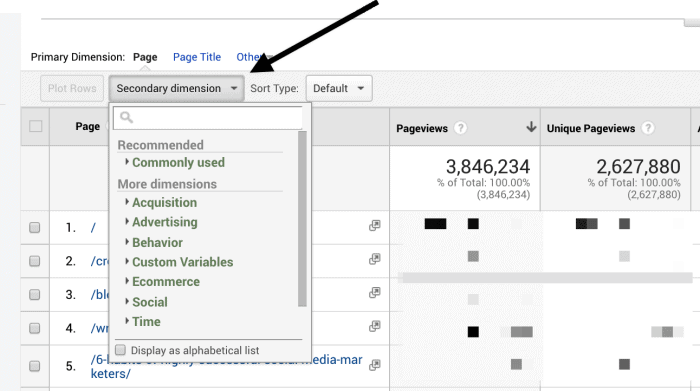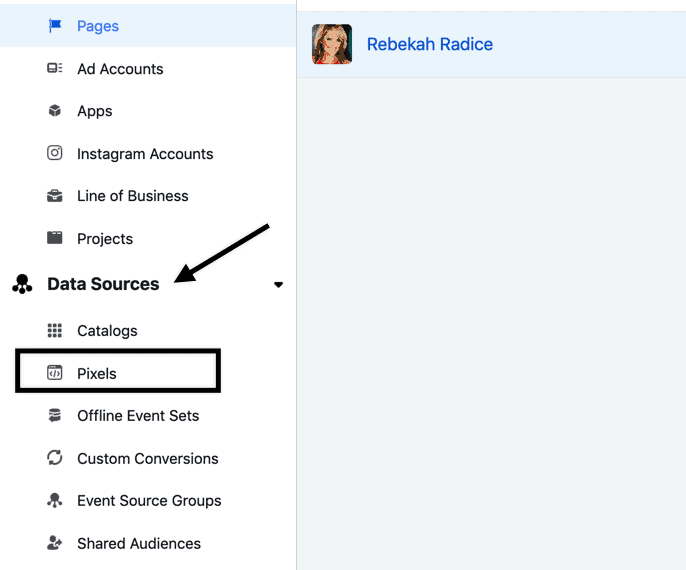Ever wonder how to use social media to make sales? Or how to create a guided path to purchase through your social channels? You can… and believe it or not, it's not as difficult as you think.
Sure, packaging up your expertise and converting connections into leads can feel awkward. And who wants to be sold? No one!
But there is a way to naturally share who you are and what you do in a valuable and meaningful way with an audience eager to buy.
That’s why I teamed up with SEMrush for a series called, Social Chat 2.0. Our first topic, "Why Your Social Media Traffic Isn’t Buying (and what to do about it)," included a stellar lineup.
Listen in to the full webinar replay, check out the top highlights or read through the complete transcript below to find out how you can turn your social media traffic into sales.
And don’t forget to take a look at our favorite social selling tools you’ve probably never heard of, but will wonder how you lived without!
SEMRush social chat recap
Within this webinar series, I chat with today’s top experts on what it takes to succeed on social media.
In our first webinar of the series, I was joined by:
- Mike Allton, Founder of the Blogging Brute and Chief Ambassador at Agorapulse
- Stephanie Liu, CEO at Lights, Camera, Live
- Jeff Sieh, Owner and Creative Director at His Design, Inc. and social Media Manager at Social Media Examiner
Everyone on our panel is actively involved in the content, promotion, and conversion aspect of their business and have brought their top social sales strategies to us today.
Let's dig in!
This transcript was repurposed into an Ebook via the Designrr app we discuss on the show. Read through the transcript and see a description of the app below!

Social Chat Q 1: Social Media Traffic, Myth vs. Reality
The myth is that more traffic = more conversions, but that’s not always the case. When conversions are lacking, but social interaction is high, where do you begin to get to the bottom of your traffic and conversion problem?
Mike Allton, Founder of Blogging Brute and Brand Evangelist at Agorapulse.
It is a bit of a myth because all traffic isn't equal. All traffic's not the same. It's not all coming from the same place.
[Tweet "More traffic doesn't equal more sales because all traffic isn't equal. All traffic's not the same. It's not all coming from the same place. @Mike_Allton"]
When we go into our Google Analytics, we can see the traffic's coming in from Facebook, from Twitter, from Google search, from other websites.
But just because we're getting more traffic doesn't mean it's coming in from those exact same places.
But we need to figure out why isn't it converting, or what's converting and what isn't. I mentioned Facebook. So let's imagine for a moment that you got 100 visitors from Facebook last month.
Some of them converted. Most of them didn't, and we want to drill down and figure out why.
First, go into Google Analytics, and add what's called a secondary dimension.

You can see from Facebook, what your traffic did and what content they clicked through.
Now you can get a sense of what's going on, how they're converting and on what pieces of content. But that still doesn't answer the question of where did they come from, because Facebook's a big place.
They could've hit the call to action button on your page. They could've been clicking on your post, but they could've been clicking on somebody else's shares of your content.
So the one tip that I want to put in here is that we want to look at that referral traffic, and we want to try to understand where it's coming from within that Facebook ecosystem.
So I'm going to suggest you use Google UTM Parameters. You put campaign tags and source tags and content tags on your call to action buttons, on your cover photo if you're inserting a link there in the description and certainly on the posts you're sharing to your Facebook Page.
This is also true for every other social network, by the way.

Now when you go into Google Analytics, you can see where the traffic's coming from.
It's what's going to help you understand, "Oh, okay. We did these posts last month, and we generated this much traffic, but it was only these three posts, out of the whole mix of posts, that actually converted."
Social chat Q2: Unqualified social media traffic is killing conversions
Unqualified social traffic is the elephant in the room and one of the top (but most overlooked) places that businesses should focus on. How do you identify unqualified traffic and then what do you do about it?
Stephanie Liu, Founder of Lights, Camera, Live
We're a little old school. We still work off of a Google spreadsheet with a tab called the "UTM Builder."
We're tracking each campaign and calculating specific data within that. As we generate a new link for tracking, we can drop important information into the spreadsheet and it auto-generates our tracking URL.
- Term
- Keyword
- URL
That way, whenever you're developing copy that's promoting a landing page or any other type of content, you can flip over to the tab, plop in the URL, and it automatically builds the tracking.
Now you never have to worry about opening another window, browser window or another tool. It's all there, and you can go ahead and keep track of it, including your live video.
If you have a CTA in your live video, you’ll want to add the Google UTM parameters to the link AND make sure that you have your Facebook Pixel installed on your landing page.
The pixel will allow you to track a user’s activity from Lead to Registration to Purchase.

Social chat Q 3: What social media content is converting (and why)
Now that you're getting a clearer picture where traffic is coming from, how do you determine what type of content is performing?
Jeff Sieh, Founder of Manly Pinterest Tips and Social Media Marketing Manager at Social Media Examiner.
Everyone knows I'm a big fan of Pinterest and visual design, so let's say for example, you're driving traffic from Pinterest to your site.
You're getting traffic, but you're not getting conversions. And on top of that, you see your bounce rate is really high. They're not staying on your page. Well, why is that?
With Pinterest, you're dealing with visual marketing. A lot of times, you might be shocked at what image works. You have an idea in your head, "Well, this is a real pretty one. This is going to convert really well."
Then all of a sudden, horrible, ugly images are converting, and you're like, "Why are they doing that?"
Drilling down and trying to understand the path to your site is the key to why that unqualified traffic is bouncing so fast and what content is actually working.
Here's a real-world example:
I had a great Pin. It was driving traffic, but it wasn't converting and the bounce rate was really high. What I determined was that the image on the actual Pin was a disconnect from the blog article .
People would land on the page and see a different image than what was on the Pin, and they were like, "Oh, I must have hit spam. Or it's not the right link." I'd created a roadblock within my conversion path.
When you're looking at your own content, ask:
- Why is my social referral traffic bouncing like this?
- Why is this unqualified traffic not working?
- Where am I leading them and is it connected to their first touch piece of content?
- What can I create more of based on what's working?
When you step back and aren't being emotional about it, you can see the data and then move forward from that.
Social chat Q4: The best social sales tools
We mentioned a lot of tools during our webinar, what are the best tools for managing your social sales campaigns? Here's a roundup of everyone's favorite social selling tools.
Headliner.App
If you're using video like everyone on this panel, you need an easy way to create social media videos from your existing audio, video, or text.
With Headliner.App, you can upload your latest podcast, radio show, blog, website, or business video, and convert it to 6 different types of video:
- Audiogram
- Article to video
- Video transcript
- Full episode
- Find my content
- Straight to editor
Repurpose.io
As Stephanie explains, "Get more visibility for your Facebook Live or regular Facebook videos by automatically uploading them to YouTube, giving you massive exposure after they fade from the Facebook newsfeed.
Eliminate the hassle of downloading videos from Facebook and uploading to YouTube while saving a ton of time, Internet bandwidth, and computer resources." (YES!!) 👍
Designrr.io
I'm a big fan of repurposing content and Deisgnrr makes this process easier than ever before.
Take blog posts, video content, Word docs, any content you've created, and easily turn them into beautifully designed Ebooks.
Tailwind
If you're marketing your business on Pinterest or Instagram, Tailwind will quickly become your best friend.
Easily schedule content, find your best times to post, re-share your best-performing content, and so much more.
It's not enough to "do social media," you need a way to stay consistent so you're profiting from your time spent on social media.
With Tailwind, that's exactly what you'll do!
Agorapulse
Agorapulse is my daily social media management tool.
With it, I can set my evergreen content on autopilot, monitor mentions across a variety of channels, and review reports so I'm always on top of my data.
If you're looking for a way to stop running around social media and instead, actively manage your message, content, and conversions, give Agorapulse a try.
You won't regret it!
SEMrush
Social selling and SEMrush go together like peanut butter and jelly or peanut butter and banana or peanut butter and chocolate. You get the idea. 😀
If you want to measure social media (and social selling) performance, SEMrush is a must-have in your tool arsenal.
With their Social Media Toolkit, you can easily create drag-and-drop reports including competitive analysis, social engagement, and overall performance.
Check it out for free and add it to your social sales strategy.
Final thoughts
Social selling can be confusing, but it doesn't have to be hard.
Take time to understand what naturally interests your audience and pay attention to the data.
Now create content that moves and inspires them to take action.
They'll thank you for it as they come back time and again, eager to consume (and buy) what you have to offer.
About Rebekah Radice
Rebekah Radice, co-founder of BRIL.LA, has traded narcissism for purpose. When not driving growth, you'll find her tricking family into thinking she's Emeril Lagasse - likely covered in marinara. The spotlight was fun, but impact is better. These days she's using 20+ years of brand brilliance for good.
